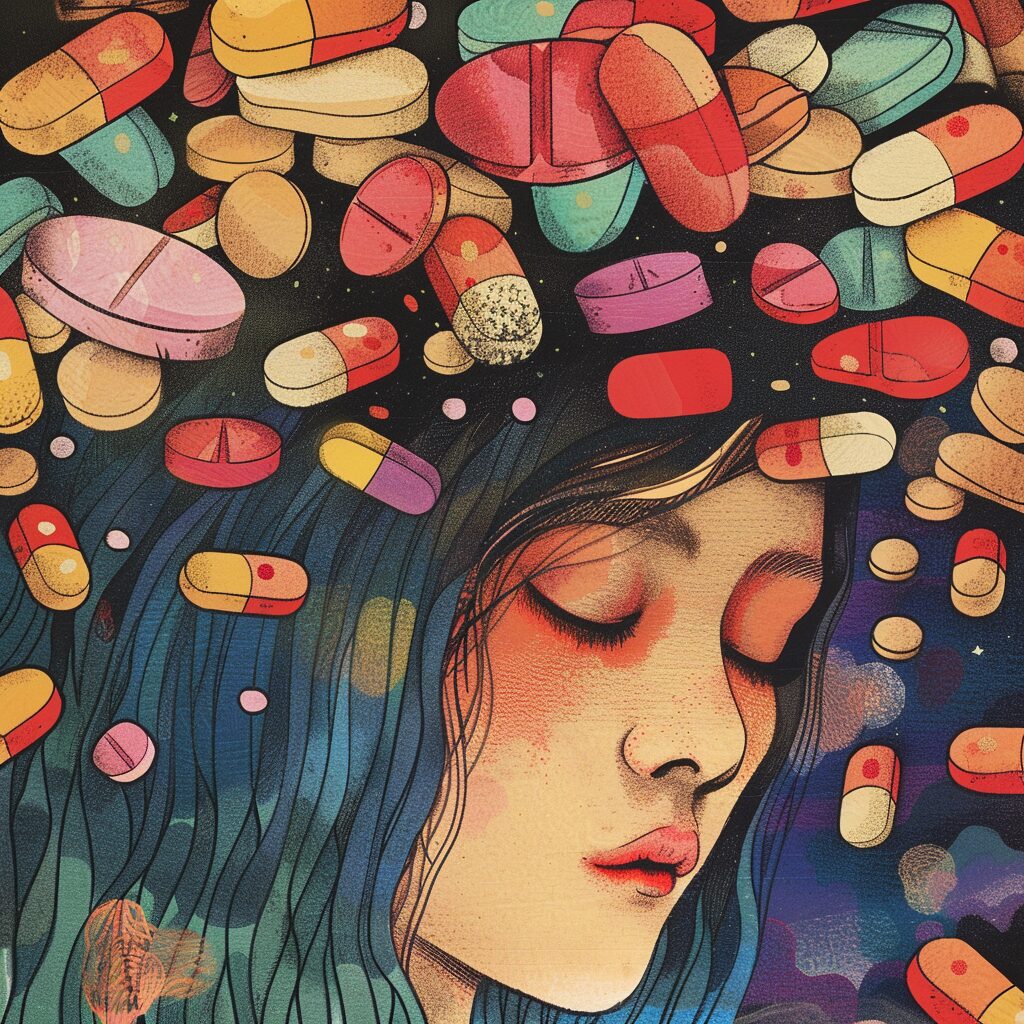Key Takeaway:
- Childhood trauma can have a significant impact on addiction recovery. It is important to understand the definition of childhood trauma and how it affects individuals in order to effectively address it during recovery.
- Creating a safe space and seeking professional support can aid in addressing childhood trauma during recovery. Mental health care professionals can help individuals recognize and accept feelings related to trauma.
- Developing coping strategies for childhood trauma, such as practicing mindfulness and meditation and building a supportive network, can help individuals prioritize self-care and achieve long-term recovery. Cultivating healthy coping mechanisms for life’s challenges is important for maintaining sobriety.
Struggling with addiction and childhood trauma can be overwhelming, but you don’t have to do it alone. This article provides valuable insights into how to successfully manage both conditions together. Get the support you need to take control of your life and start healing today.
Understanding Childhood Trauma
Childhood trauma is an often-overlooked issue that can have a significant impact on addiction recovery. As someone who has struggled with addiction myself, I know firsthand how crucial it is to address underlying issues like trauma.
In this part of the article, we ll be taking a closer look at childhood trauma and how it affects individuals. We ll start by defining what childhood trauma is and examining how it can leave lasting effects well into adulthood. We ll also delve into how recognizing the symptoms of childhood trauma can help those in recovery, and explore the complex relationship between trauma and addiction.

Defining Childhood Trauma: What It Is and how it affects individuals
It’s crucial to understand the impact of childhood trauma on individuals. Childhood trauma refers to an experience that is emotionally painful or distressful and has a long-lasting negative effect on one’s mental, physical, and emotional well-being. Childhood trauma can range from abuse (physical, sexual, or emotional) to neglect (physical or emotional), natural disasters, accidents, loss of a loved one, witnessing violence or crime, among others.
When traumatic memories are stored in the brain, they can affect neural functioning causing behavioral changes and challenges in regulating emotions. Individuals may go through various symptoms such as anxiety disorders (obsessive-compulsive disorder, post-traumatic stress disorder), substance abuse issues including alcohol addiction and other impulse control problems like eating disorders.
Statistics have shown that children who experience abuse or neglect are at higher risk of developing substance abuse disorders later in life due to weakened internal coping mechanisms. As adults when triggered by situations similar to their childhood traumas such as feelings of helplessness and frustration could lead them into relapse.
It’s important to start acknowledging childhood trauma as it provides a better understanding of why some individuals react specifically. By doing so; society may comprehend how they can reduce the impact & prevent any future incidents – this would be best achieved through creating awareness campaigns & providing professional assistance for victims/survivors seeking recovery support.
Now let me tell you firsthand the impact that recognizing childhood trauma had while studying addiction recovery…
The key lies within early detection! By identifying the symptoms earlier rather than later on in life – I realized how much easier it made identifying potential triggers!
Recognizing Symptoms of Childhood Trauma and Their Impact on Addiction Recovery
Recognizing Symptoms of Childhood Trauma and Their Impact on Addiction Recovery can be a complicated process. As children, we develop psychological responses to situations that affect our mental and emotional health, many of which continue to impact us into adulthood. These experiences have long-term consequences that manifest in ways not always apparent.
In recognizing symptoms of childhood trauma, one must understand how the brain processes traumatic events. Trauma causes the amygdala, our brain’s alarm system, to overreact, activating the fight or flight response frequently. This reaction triggers an increase in cortisol levels that builds up in our bodies and affects us negatively over time. The impact on addiction recovery is significant because it makes patients more vulnerable to triggers that lead them back into harmful habits.
Recognizing symptoms of childhood trauma is challenging because the effects are often hidden and difficult to identify. Disassociation from memories, anxiety disorders (PTSD), depression, anger outbursts, self-isolation are a few common examples that indicate childhood trauma. This knowledge would make treatment easier for addicts dealing with co-occurring trauma and addiction issues.
I remember sitting at my desk sweating profusely as if there were no AC since my mind had slipped into an irresistible haze after hearing my boss yell at me as he used to do when I was young. Then I realized how much my childhood experiences still affected me in my present-day life. It was hard to accept this reality, but facing the truth heightened my empathetic understanding of people dealing with similar situations.
The agony of childhood doesn’t vanish as one grows older; instead, it affects several aspects of their adult life like education, job opportunities, or other prospects they need to achieve financial stability. Therefore, only by understanding the relationship between childhood trauma and addiction recovery can we educate ourselves for better intervention techniques during rehabilitation programs.
‘Exploring the Relationship between Childhood Trauma and Addiction Recovery’ opens a whole new realm of possibilities towards healing by expounding on the previous discussion’s nuances.
Exploring the Relationship between Childhood Trauma and Addiction Recovery
The impact of childhood trauma on addiction recovery is a complex and fascinating topic that deserves exploration. It has been observed that individuals who have undergone childhood trauma are at a higher risk of developing addiction, as substances can offer temporary relief from the psychological pain caused by their traumatic experiences. However, exploring the relationship between childhood trauma and addiction recovery is not just about understanding why one can lead to the other, but also about finding ways to prevent addiction relapse by addressing underlying emotional issues.
One reason why childhood trauma can lead to addiction is because it creates a higher likelihood of developing mental health issues such as anxiety, depression and PTSD among others. These conditions, left unsupported, can contribute to a negative cycle that worsens over time. On the other hand, seeking professional help can enable individuals with childhood trauma-related mental health issues to develop healthy coping mechanisms that prevent them from turning towards drugs or alcohol when faced with stressors in life.
Childhood traumas such as physical or verbal abuse or neglect can make people feel powerless and vulnerable. They may experience feelings of shame or worthlessness throughout their life. Substance abuse offers a sense of control and euphoria which they may not have otherwise experienced – this false sense of empowerment becomes increasingly dangerous in cases where drug use leads to overdose or legal trouble later in life.
For those struggling with both addiction recovery and past trauma history, it’s essential to recognize that they’re often interlinked and treatment strategies need to take into account both these factors. A pro tip for people pursuing cessation from substance abuse during mental health treatment could be seeking alternative methods like Cognitive Behavior Therapy (CBT) since such methods examine problematic behaviors through mindfulness & reflexivity rather than solely focusing on the object of an addictive behavior.
If you want lasting freedom from drug dependence while also fully learning how to deal with emotions stemming from traumatic experiences in your lives, stay tuned for my next section where we will discuss some valuable ways on ‘Addressing Childhood Trauma During Recovery’ to achieve holistic healing.

Addressing Childhood Trauma During Recovery
Addressing past childhood trauma is vital for addiction recovery. Not only does addressing trauma lower the risk of relapse, but it also can improve overall mental health. In this section, I’ll discuss three subtopics related to addressing childhood trauma during recovery.
- First, we’ll touch on the importance of validating emotions and recognizing feelings related to past trauma.
- Then, we’ll touch on how to create a safe space for enhancing trauma recovery.
- And lastly, we’ll discuss how mental health professionals can aid in your recovery journey.
By the end of this section, you’ll have a clearer understanding of how to address childhood trauma during addiction recovery, along with practical steps to take.

Validating Emotions: Recognizing and Accepting Feelings Related to Trauma
When we experience trauma, our emotions can become overwhelming and difficult to manage. Validating emotions involves recognizing and accepting these feelings as real and important. It’s a process that can help individuals cope with the aftermath of traumatic events.
Validating emotions works because it acknowledges that our feelings are valid and understandable responses to what we’ve experienced. This approach is based on the assumption that individuals are best equipped to manage their own emotions and that external validation can be an important part of healing from trauma.
One way to validate emotions is to help individuals identify and label the specific emotions they’re experiencing. This might involve using techniques like mindfulness or cognitive-behavioral therapy to increase awareness of internal experiences.
In addition, validating emotions requires an understanding of the complexity of trauma. Trauma can manifest in different ways, depending on a range of factors like age, gender, cultural background, and past experiences. Effective treatment must take these individual differences into account.
A true story: Kate experienced a traumatic event at work when she witnessed a violent assault. Afterward, she felt extremely anxious and overwhelmed but was hesitant to seek help for fear of being judged or dismissed. Eventually, she sought therapy from a counselor who took a validating approach, encouraging her to talk about her feelings without judgment or criticism. Over time, Kate began to feel more comfortable expressing her emotions and developed strategies for managing anxiety related to the trauma.
“I never realized how integral environment modifications were until I experienced them firsthand during my recovery from childhood trauma.”
Creating a Safe Space: Environment Modifications for Enhanced Trauma Recovery
Creating a safe space is crucial when it comes to enhancing trauma recovery. It involves modifying the environment to make it more conducive to healing and minimizing triggers that may cause emotional distress. A safe space is key in addressing childhood trauma during addiction recovery.
Creating a safe space means different things for different people, but some changes may include introducing comfortable furniture, adding calming elements like warm lighting or soothing music, creating boundaries, enhancing privacy, and promoting a sense of control. Providing such an atmosphere can allow clients to feel more relaxed, secure and empowered in their surroundings.
Studies suggest that when clients’ environments are modified based on their specific needs, the rate of successful therapy increases significantly. It makes sense that feeling comfortable and secure in therapy would lead to improved outcomes. Environment modifications help clients concentrate better during sessions and facilitate communication with their therapists.
At the heart of this approach is the idea that environmental modifications need to go beyond simply decorating or rearranging your living spaces; they require intentional planning tailored to the individual’s needs. Creating an environment that supports safety and well-being takes time, effort and awareness of what factors contribute positively or negatively towards mental health.
A true story about creating a safe space: Throughout her recovery process from addiction, Maureen had constantly struggled with anxiety caused by past traumatic events. Counseling had been successful to some extent but facing these traumas remained difficult for her until she began modifying her environment at home – she decluttered her house, added natural light fixtures like plants and created a designated area for her mindfulness practice. Maureen eventually found comfort within herself by creating a peaceful atmosphere conducive to healing.
Next up: “When you’re on your road trip through recovery from addiction, the best thing you can do is bring along someone who knows all about map reading…or rather Mental Health Care Professionals who can guide you even when you can’t see where you’re headed!”
Seeking Professional Support: How Mental Health Care Professionals Can Aid Your Recovery
Seeking Professional Support: How Mental Health Care Professionals Can Aid Your Recovery is a vital step towards healing from childhood trauma during addiction recovery. Mental health care professionals play an integral role in guiding individuals towards a healthier mental state and providing the necessary resources for recovery. They work with patients to develop personalized plans, provide support, and assist in achieving individual goals.
The process of seeking professional support can be daunting, but it is essential. It involves identifying suitable mental health care professionals and speaking openly about your struggles with them. This process helps identify underlying issues that contribute to addiction while creating a roadmap for addressing trauma in addiction treatment.
Mental health care professionals are best equipped to aid in recovery due to their training, skills, and expertise. They work with patients to develop coping mechanisms, identify triggers or patterns in behavior that foster addiction, unpack past traumas or events that contribute to addictive behaviors or negative thought patterns. Through psychotherapy and other modalities of treatment such as cognitive-behavioral therapy (CBT), dialectical behavior therapy (DBT), cognitive processing therapy (CPT) they empower individuals with the tools needed to overcome their addictions.
Mental health care professionals also provide individuals with a safe space where they can express themselves without judgment or fear of repercussions. In this supportive environment, patients are encouraged to explore their experiences fully and reframe their understanding of them. These reframed understandings lead to self-acceptance, better decision-making capacity, positive self-talk which ultimately drives behavioral changes.
If you are unsure how to get started on this journey seeking talking therapy from mental health care professionals near you is crucial. They can provide valuable information on the types of therapies available suited for you based on your unique situation while connecting you with resources pertaining to mental happiness.
Professional support paves the way for clearing traumatic memories stored within us; next up let me help you start navigating your way amidst this pain using some simple yet effective coping strategies.
Coping Strategies for Childhood Trauma
As someone who has struggled with addiction, I understand that addressing childhood trauma is an essential part of addiction recovery. Coping strategies for childhood trauma can help us manage the deep-rooted emotional pain that can lead to addiction. In this section, we ll explore the powerful tools for managing trauma recovery.
The first sub-section is all about prioritizing self-care and managing emotions through gentle self-healing techniques. The second sub-section will focus on how building a supportive network can help us recover from childhood trauma. Lastly, we ll delve into the benefits of mindfulness and meditation, teaching us coping techniques to become more equipped for the journey of trauma recovery.

Prioritizing Self-Care: Managing Emotions and Self-Healing
Taking care of oneself is an essential part of leading a healthy and fulfilling life. It includes prioritizing self-care, managing emotions, and conducting self-healing activities. These aspects help individuals to take better care of themselves on physical, mental, and emotional levels.
Prioritizing self-care is an effective tool to manage one’s emotions and promote self-healing. It helps individuals identify their needs and fulfill them in the best possible way. While it may seem selfish at first, taking care of oneself is crucial for developing resilience and reducing stress levels.
Self-care activities can be anything that positively impacts an individual’s physical or emotional health. Some common forms include exercising regularly, eating a well-balanced diet, practicing mindfulness meditation, getting enough rest, and seeking therapy when necessary.
It’s important to note that prioritizing self-care isn’t the same as being selfish or putting oneself above others’ needs. Instead, it’s a way to fulfill one’s personal responsibility towards oneself while becoming better equipped to handle challenges faced in relationships, work-life balance or external factors like childhood trauma.
Pro Tip: Taking time out for oneself doesn’t necessarily mean meditating or engaging in other healing activities; sometimes it can simply mean doing things you enjoy without distractions like reading your favorite book with no interruptions.
Incorporating these methods of prioritizing self-care promotes overall wellness by allowing individuals to tune into their bodies’ needs while also becoming increasingly in tune with their emotions. This positions one into the next step of building support systems: surrounding yourself with a supportive network – something we will dive into next!
Building a Support System: Surrounding Yourself with A Supportive Network
Many individuals who have experienced childhood trauma tend to suffer from addiction later on in their lives. Addiction recovery is a long and challenging process, and it can be even more difficult for those who have underlying childhood trauma. One important coping strategy that can aid in the addiction recovery process is building a support system and surrounding oneself with a supportive network.
Building a support system involves creating a group of people who are willing to provide encouragement, understanding, and empathy throughout the journey of addiction recovery. The support system could comprise family members, friends, therapists, support groups, or even coworkers. Being part of such a network helps an individual feel less alone in their struggles, particularly during times when they may struggle with feelings of isolation or self-doubt.
Several factors contribute to the efficacy of building a supportive network while dealing with addiction and childhood trauma. Firstly, being surrounded by people who understand what one is going through eliminates feelings of shame or stigma that can hinder progress during the recovery journey. Moreover, having someone to talk to about one’s experiences provides an outlet for emotional release and validation. Additionally, peers within a supportive network can hold each other accountable while celebrating milestones that might seem trivial externally but show internal progress.
One particular aspect worth highlighting regarding building a support system is the inclination many individuals possess towards rejecting help when dealing with personal issues. This habit born from thoughts such as “I’m tough; I can handle this” only leads to unnecessary suffering often resulting from lack of outsiders’ perspective on our issues. Taking that leap into vulnerability by admitting we don’t know everything about ourselves opens us up for growth which can open doors for previously unimaginable improvement.
Overall, questioning one’s ability to go through addiction recovery alone indicates both humility and insightfulness; therefore it’s wise to overcome the initial reluctance towards seeking help so that one’s healing journey has optimum chances at success. If you’re feeling hesitant about reaching out for help or building your own support system, remember that it’s better to have a network that you don’t necessarily need than to need one and not have it. A supportive network can make a huge difference in the addiction recovery process, and it can be the small push you need to maintain sobriety.
“Once I realized I couldn’t face this journey alone, I started surrounding myself with people who understood what I was going through. Here’s how I did it.”
Next up, let’s talk about Practicing Mindfulness and Meditation as coping techniques for trauma recovery.
Practicing Mindfulness and Meditation: Coping Techniques for Trauma Recovery
Practicing mindfulness and meditation is a helpful coping technique for trauma recovery. This method encourages people to focus on the present moment, without judgment or distraction, and can assist with processing difficult emotions related to past traumatic experiences.
By practicing mindfulness and meditation regularly, individuals can cultivate a greater sense of self-awareness and emotional regulation. They learn how to create a safe space within themselves where they can confront and work through difficult aspects of their past. These coping techniques have proven beneficial in reducing symptoms of depression, anxiety, and post-traumatic stress disorder (PTSD).
Another valuable aspect of mindfulness and meditation is that it allows people to release feelings of shame or guilt related to their trauma experiences. Instead of dwelling on negative thoughts or self-judgment, these techniques encourage individuals to focus on self-compassion and forgiveness.
Research has shown that practicing mindfulness and meditation can physically change the structure of the brain in a positive way. With regular practice, individuals have reported an increased ability to regulate emotions, improved memory function, and even a decrease in physical pain levels.
A study conducted by Yale University found that individuals who practiced daily mediation experienced reduced activation in the amygdala – the part of the brain responsible for processing fear responses. This not only highlights the effectiveness of these practices but also provides additional evidence supporting their potential as part of a comprehensive care plan for trauma recovery.
Feeling empowered after using these mindfulness techniques? Let s talk about long-term recovery from childhood trauma next.
Long-term Recovery from Childhood Trauma
As someone who has experienced addiction, I understand that recovery is a long and challenging journey that requires more than just abstaining from substance use. Childhood trauma can often contribute to addiction and make sobriety even harder to achieve. In this part of the article, we will discuss long-term recovery from childhood trauma. This will include understanding the triggers and learning how to manage them, developing a relapse prevention plan that helps you stay sober while working through your trauma, and cultivating healthy coping mechanisms that will serve you for life’s challenges.

Understanding Triggers and Managing Them
Understanding Triggers and Managing Them is an essential part of long-term recovery from childhood trauma during addiction recovery. Triggers are external or internal cues that cause a person to experience overwhelming emotions, leading to the urge to use drugs or alcohol. These triggers can stem from various sources, such as people, places, things, and even specific memories.
Understanding Triggers and Managing Them involves identifying the root causes of these triggers and developing healthy coping mechanisms to manage them. By recognizing the patterns that lead to unhealthy behaviors, individuals in recovery can take steps towards positive change. Once they understand their triggers, they can learn ways to manage them constructively instead of reacting impulsively.
Effective ways for Understanding Triggers and Managing Them include journaling and meditation. They help individuals tune into their feelings and identify any potential triggers before they have a chance to escalate. Other strategies involve exercises like deep breathing techniques or physical activity that helps reduce stress levels.
In addition, it’s beneficial to surround oneself with supportive friends or family members who understand what you’re going through. These connections provide a vital sense of community that can counteract feelings of isolation often associated with trauma-related substance abuse.
By understanding your triggers’ underlying factors and how to manage them healthily actively, you can maintain sobriety without giving into negative influences. With time, this kind of mindful management will become second nature empowering you throughout your lifelong journey toward lasting recovery.
To stay on track on this journey, I’ve found it helpful to create a Relapse Prevention Plan: Staying Sober Through Trauma Recovery. It outlines specific goals for maintaining sobriety and includes actionable steps for coping with potential setbacks in real-time situations where I might feel triggered by stressors related to my trauma experiences.
Developing a Relapse Prevention Plan: Staying Sober Through Trauma Recovery
Trauma recovery and addiction recovery often go hand in hand, as many individuals who struggle with addiction have experienced some form of trauma in their lives. Developing a relapse prevention plan is an essential step towards staying on the path to long-term sobriety through trauma recovery.
A relapse prevention plan involves creating a strategy for dealing with potential triggers that could lead to drug or alcohol use. It includes identifying warning signs, developing coping strategies, seeking support from loved ones or professionals, and establishing healthy habits and routines. By having a solid plan in place, individuals can minimize the risk of relapse during their trauma recovery journey.
The reason why developing a relapse prevention plan works is because it provides structure and accountability. It encourages individuals to take charge of their own lives, rather than relying solely on external resources such as therapy or medication. It also helps them develop self-awareness, gain insight into their own behaviors and thought patterns, and build resilience in the face of difficult situations.
Developing a relapse prevention plan can be daunting, but there are resources available to help individuals navigate this process. Therapy or counseling sessions can provide valuable guidance and support. Online forums or support groups are another great resource for connecting with others who have gone through similar experiences.
During my own trauma recovery journey, I found that developing a relapse prevention plan was crucial for staying on track with my sobriety goals. Through therapy sessions and support from my loved ones, I was able to identify my triggers and develop coping strategies for dealing with them. While there were certainly bumps along the way, having a solid plan in place gave me the strength to stay committed to my sobriety journey.
Cultivating Healthy Coping Mechanisms for Life’s Challenges.
Cultivating healthy coping mechanisms for life’s challenges is an essential aspect of leading a fulfilling life. Coping mechanisms refer to the strategies that individuals use to adapt when faced with challenging or stressful situations. While everyone has their unique ways of coping, some methods are healthier than others. Thus, it is vital to cultivate viable coping mechanisms to manage stress and difficult experiences.
Cultivating healthy coping mechanisms entails learning how to respond to situations in healthy and positive ways instead of resorting to self-destructive behaviors such as substance abuse or self-harm. One reason why cultivating healthy coping mechanisms is so critical is that it promotes resilience, enabling you to bounce back stronger after experiencing setbacks or negative emotions. Also, practicing healthy habits over time can help break the cycles of negative behavior that can lead to addiction.
There are various techniques individuals can use when cultivating healthy coping mechanisms. For instance, engaging in activities like meditation, yoga, or mindfulness exercises can help reduce anxiety and promote feelings of calmness and relaxation. Talking with someone you trust about your problems can also lighten the mental burden caused by stress and trauma.
Another valuable technique for cultivating healthy coping methods involves creating a positive support system. Surrounding yourself with people who care about you and who are supportive can provide a sense of safety and comfort when things get tough.
If meditating or talking with someone isn’t your thing, finding another constructive activity that brings you joy cannot be understated in this discussion. Draw your focus outward onto something positive and concrete gardening may work if given enough patience everyone has their crossroad thoughts they need attending.
Five Facts About Addressing Childhood Trauma During Addiction Recovery:
- Childhood trauma is a common underlying factor in substance abuse disorders. (Source: American Academy of Pediatrics)
- Addressing childhood trauma during addiction recovery is crucial for long-term sobriety. (Source: National Institute on Drug Abuse)
- Treatment approaches for addiction recovery that address trauma include cognitive behavioral therapy, trauma-focused therapy, and mindfulness-based interventions. (Source: Substance Abuse and Mental Health Services Administration)
- Identifying and addressing trauma can also improve mental health outcomes for individuals in addiction recovery. (Source: Journal of Substance Abuse Treatment)
- Support networks, such as family and peer support groups, can also play a critical role in addressing childhood trauma during addiction recovery. (Source: Addiction Science & Clinical Practice)
FAQs about How To Address Childhood Trauma During Addiction Recovery
How to address childhood trauma during addiction recovery?
Addressing childhood trauma during addiction recovery involves seeking professional help, utilizing therapy and other supportive resources, and developing healthy coping mechanisms to process and manage the trauma. Talk therapy, cognitive-behavioral therapy, or eye movement desensitization and reprocessing (EMDR) are effective in addressing childhood trauma.
What role does childhood trauma play in addiction?
The roles of Childhood trauma play a significant role in addiction. Traumatic events in childhood such as physical abuse, sexual assault, or parental neglect often trigger substance abuse as a coping mechanism. Individuals who have experienced childhood trauma are more likely to develop addiction and have a harder time recovering.
What are some common symptoms of childhood trauma?
Some Common symptoms of childhood trauma are depression, anxiety, post-traumatic stress disorder, emotional numbness, self-harm or suicidal behavior. These symptoms may lead to substance abuse as a way to cope with the trauma or to numb the emotional pain.
Can addressing childhood trauma in addiction recovery improve treatment outcomes?
Yes, addressing childhood trauma in addiction recovery can significantly improve treatment outcomes. Therapy to address trauma can help individuals gain insight into their behavior, break the cycle of addiction, and improve overall mental health. Individuals who address their childhood trauma have a higher chance of maintaining long-term sobriety.
What types of therapy are effective in addressing childhood trauma during addiction recovery?
Several types of therapy are effective in addressing childhood trauma during addiction recovery. Talk therapy, cognitive-behavioral therapy, and eye movement desensitization and reprocessing (EMDR) are proven to be effective in addressing childhood trauma. These therapies can help individuals overcome traumatic memories and provide them with tools to cope with the resulting emotional pain.
How can family and friends support a loved one struggling with addiction and childhood trauma?
By the family and friends can support a loved one by educating themselves about addiction and childhood trauma, offering emotional support, and encouraging their loved one to seek professional help. Creating a safe space for open communication and avoiding judgment can also help individuals struggling with addiction and childhood trauma feel comfortable seeking help.








